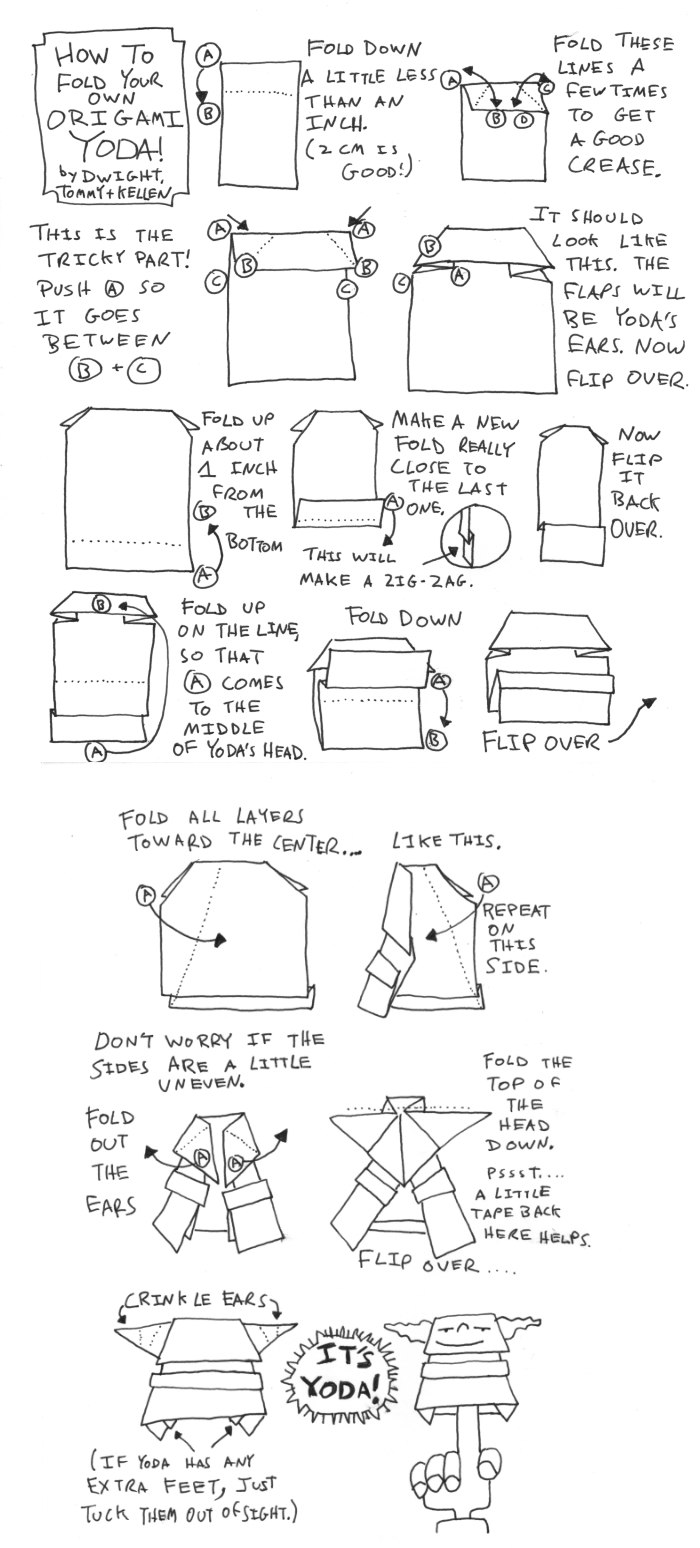Theme:
Origami
Target Audience:
3rd-6th grades
Rationale:
Origami books are in high demand in our children’s department, and as a
result, we have a quite extensive and relatively new collection of origami
books for various skill levels. The
interest also indicates that an origami-themed program will be well-received by
patrons. Sullivan (2005) endorses arts/craft programs as entertaining and
enriching options for school-age children and further suggests using books to
reinforce the craft activity for older children instead of the storytime method
of using a craft to reinforce the books.
Craft programs can be a great way to highlight the both the nonfiction
and fiction collections.
Day/Time:
During the school year, we have weekly after-school programs on
Wednesdays at 4:00, and we have a weekly craft program on Saturday afternoons
at 3:00 year round. This program could
be offered at either of these times.
Both programs typically last forty-five minutes to an hour.
Set-up:
- Recruit volunteers to help guide activities. An adult origami club meets weekly at our library. Use that group to find one or two “experts” who can come and demonstrate techniques and provide assistance to the program participants. Ask them to bring a few sample pieces that are more complex to show the participants. Make use of teen volunteers who have listed origami/crafts as one of their interest areas on the volunteer application.
- Promote program on print calendar, on library website’s events calendar, children’s department facebook page, and with print flyer (attached). Contact school media specialist/art teacher contacts about posting flyer in schools.
- Purchase origami paper. A package of 200 sheets is usually around $6 or $7 at most craft stores. If funding is an issue, use colored paper from library supply and cut into squares. Recycled paper with writing on only one side can also be used for most projects.
- Select projects at beginner, intermediate, and advanced level from origami instruction books in collection. Complete a sample of each project chosen. Search youtube for demonstration videos of selected projects. If videos do not exist for the projects, consider making a demonstration video or ask teen volunteers to make a demo video prior to the program.
- Set up a laptop with demonstration videos bookmarked plugged into projector so the demos can be shown on the screen. Set up tables and chairs where everyone can see the screen. If multiple laptops are available, consider having one at each table so that demos can be shown for the different skill levels represented.
- Set each station with appropriate books for each skill level (beginner, intermediate, advanced), sample projects, and a supply of origami paper.
- Create a display for fiction/narrative books and books about Japan.
- Assign volunteers and experts to different stations.
Program:
- Softly play traditional Japanese folk music in the background. Be sure to tell participants that origami is a Japanese art form.
- As participants enter the room, sort them if possible into beginner or experienced groups and direct them to appropriate tables.
- Begin by introducing experts from adult origami club and allowing them to show completed projects that they have done. Allow the participants to ask questions of the expert guests.
- At the beginner table, participants will be guided through a preselected project such as a boat, plane, cup, or fortune-teller. After the first project, beginners can choose to stay at the beginner table and complete another project or go to one of the other tables to choose a more difficult project.
- At the intermediate and advanced tables, participants can choose a project from one of the books.
- Volunteers/Experts will demonstrate and assist as needed.
- Each participant should have time to complete two projects. They can do a third if time permits. Once the projects are complete, we will watch the Scholastic book trailer for The Strange Case of Origami Yoda (http://www.youtube.com/watch?v=gM-JN6D3cAo&feature=related) and a origami Yoda demonstration from the author Tom Anglebrand (http://www.youtube.com/watch?v=LosgVnBDdjw&feature=related) which the children can follow to make their own Yoda. A page of written instructions to make a more complex Yoda is also available from the author’s website http://origamiyoda.files.wordpress.com/2009/10/yodainstructions.jpg). Make copies of these to send home with the participants.

- Encourage participants to check out the instructional books or one of the fiction or narrative books that are available or a book on Japan or Japanese art.
Instructional Books:
·
Origami
for Everyone: Beginner,
Intermediate, Advanced by Didier Boursin
·
Origami
by Sally Henry and Trevor Cook
·
Origami: The Fun and Funky Art of Paper Folding
by Trhiranut Boonyadhistarn
·
Origami
Zoo: 25 Fun Paper Animal Creations
by Paul Jackson and Miri Golan
·
Origami
Toys: That Tumble, Fly, and Spin
by Paul Jackson
·
Monster
Origami by Duy Nguyen
·
Origami
for Fun! By Thiranut Deborah Berry
·
Snap Books Origami Series by Mary
Meinking and Chris Alexander
·
Origami
Tessellations: Awe-Inspiring Geometric
Designs by Eric Gjerde
·
Ornamental
Origami: Exploring 3D Geometric Designs by
Meenakshi Mukerji
·
Unit
Polyhedron Origami by Tomoko Fuse
Fiction/narrative books with origami tie-ins:
·
The
Pirate Girl’s Treasure: An Origami
Adventure by Peyton Leung (picture book with origami
demonstration)
·
The
Strange Case of Origami Yoda by Tom Angleberger
·
Darth
Paper Strikes Back by Tom Angleberger
·
The
Secret of the Fortune Wookiee by Tom Angleberger
(release date August 2012)
·
Waiting
to Forget by Sheila Kelly Welch
·
Sadako
and the Thousand Paper Cranes by Eleanor Coerr
·
1001
Cranes by Naomi Hirahara
·
Little
Oh
by Laura Krauss Melmed (picture book)
·
The
Paper Crane by Molly Bang (picture book)
Books on Japan/Japanese Art and Culture:
·
Several volumes from 952 in nonfiction
·
From
Painted Scrolls to Anime: Literature and
the Arts of Japan by Patty Ruland
·
Traditional
Crafts from Japan by Florence Temko
References
Sullivan,
Michael. Fundamentals of Children’s
Services. Chicago:
American Library Association, 2005.
No comments:
Post a Comment